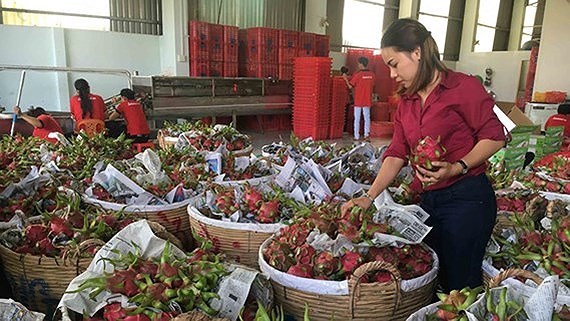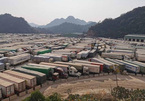 |
|
|
China has become one of the largest markets for Vietnamese agricultural products. However, most people are unaware that Vietnamese goods to China have been mainly exported in the form of border trade. Vietnamese agricultural products are mainly exported as raw materials or semi-processed products. This export form will become dangerous as China is no longer an “easy” market.
Data from the General Department of Customs of Vietnam shows that in January-November of 2021, of Vietnam’s total export value of 301.73 billion USD, the Chinese market accounted for 50.11 billion USD (the highest in Asia), ranking second after the US (86.03 billion USD).
That is why every time goods are stuck at the Vietnam-China border the Ministry of Industry and Trade urgently recommends that Vietnamese enterprises export through official channels.
According to experts, Vietnam’s agricultural and aquatic exports to China have not yet adapted to the requirements and conditions set by China, stemming from the incorrect perception of this huge market.
Firstly, Vietnamese exporters still think that China is an "easy" market, and they focus on volume, regardless of specific market needs. Some agricultural products of Vietnam such as rice and dragon fruit are produced in large quantities but with low or medium quality.
Secondly, they still perceive China as a border market. Therefore, they take every product they have to the border for sale.
"When they can't sell their goods, these products are sold at dirt cheap prices," an official from the Ministry of Industry and Trade says.
Thirdly, Vietnamese businesses still consider exports to China a form of border trade, so they pay no attention to the demand and standards of this market.
Many businesses also misunderstand that China's policies are constantly changing. In fact, many regulations have been applied for a long time. China’s rules on traceability of goods, registration of exporters, etc. have been common since 2012, but many Vietnamese exporters have not paid attention to this.
Former Minister of Agriculture and Rural Development Nguyen Xuan Cuong has said that the changes in the Chinese market show that it is “time to change our thinking. We should not consider China an easy market nor keep the habit of exporting goods in the form of border trade anymore because their import control policy is different.”
Hard to expand market
 |
|
|
Another solution is to increase the diversification of export markets to reduce dependence on the Chinese market. But owing to these 'habits' and misconceptions, this transformation is still difficult. Vietnam's customers continue to be familiar names like China, the US, and the EU.
According to data from the Ministry of Industry and Trade, Asia is still the main export market of Vietnam, which accounted for 50.8% of Vietnam’s total export turnover of goods in 2016-2020. The proportion of the Americas increased sharply in this period (26.7% compared to 21.9% in 2011-2015), but mainly thanks to the increase of exports to the US. The part of the Europe, Africa and Oceania region in the 2016-2020 period was lower than in the 2011-2015 period.
The structure of 15 key export products of Vietnam in 2011-2020 had remarkable changes. In 2011, out of 15 key export products, accounting for 70.9% of Vietnam's total merchandise exports, there were four items in the group of minerals, namely crude oil, coal, precious stones, precious metals, and petroleum of all kinds. There were four agricultural, forestry and fishery products, including aquatic products, rice, coffee and rubber. The remaining seven items were processed and manufactured goods.
In 2020, the products of the mineral group were no longer on the list of 15 key export products of Vietnam. The group of agriculture, forestry and fishery products had three items, including aquatic products, vegetables and fruits, and cashew nuts (rice in 16th place). The number of products in the group of processing and manufacturing increased to 12 items.
In 2012 phones of all kinds and phone accessories became the second largest export item with export turnover of 12.7 billion USD, just behind textiles and garments with 15 billion USD. They were then the item with the largest export turnover of Vietnam in 2013-2020.
But the group of processed and manufactured goods is still mainly products processed for foreign partners, with low added value, and exported products with high technological and quality content are limited.
To put an end to the congestion of trucks carrying Vietnamese goods to China at the border gates, Vietnamese goods must be exported via official channels. The diversification of export markets and the improvement of processed goods should also be promoted.
Luong Bang

Vietnamese goods trucks still stuck at Northern border gates
The General Department of Vietnam Customs has informed that many cargo trucks from Vietnam are still jammed in the China side of the Northern border gates and vice versa due to strict control of vehicle flow for Covid-19 prevention purposes.

China’s new regulations result in more barriers to access its huge market
China is no longer an easy market and if Vietnamese businesses don’t change their business strategies, it will be more difficult to enter the huge market.